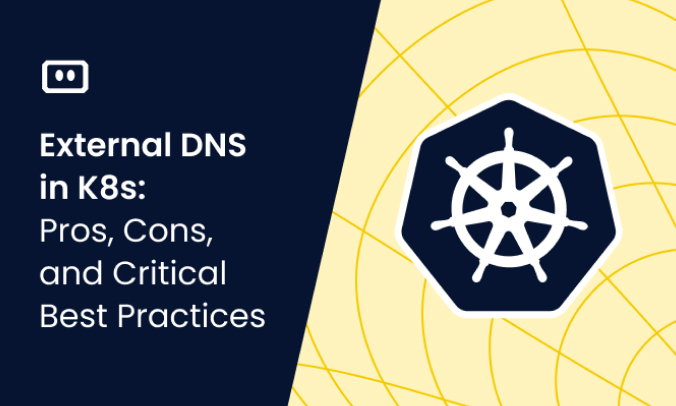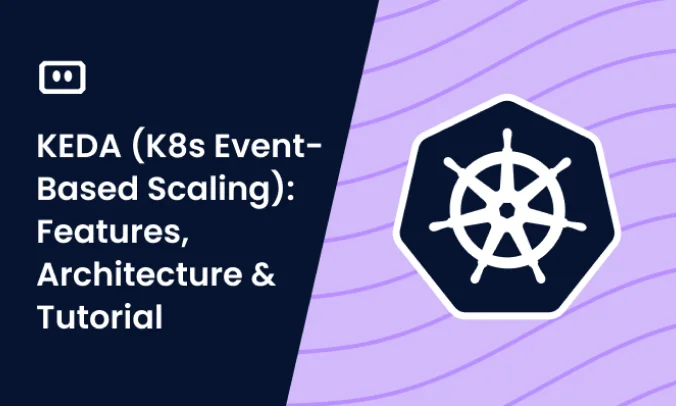What Is Rancher?
Rancher is an open-source container management platform that simplifies the deployment and management of Kubernetes clusters. It provides a unified interface for managing container orchestration, networking, storage, and security across multiple clusters, allowing users to easily deploy, scale, and monitor containerized applications.
Rancher streamlines the process of managing containers in production environments and helps organizations to efficiently adopt and operate Kubernetes.

What Is OpenShift?
OpenShift is a container application platform developed by Red Hat that provides a powerful and scalable solution for managing Kubernetes clusters. It is an enterprise-grade platform that automates the deployment, scaling, and management of containerized applications.
OpenShift extends the capabilities of Kubernetes with additional features such as an integrated developer experience, built-in monitoring and logging tools, and a comprehensive set of security and compliance features.

This is part of a series of articles about Kubernetes Rancher.
Tips from the expert

Itiel Shwartz
Co-Founder & CTO
In my experience, here are tips that can help you choose between Rancher and OpenShift:
Evaluate Your Team’s Skill Set
Assess the technical proficiency of your team with Kubernetes and related technologies. Rancher might be more suitable for teams with limited Kubernetes experience due to its simpler setup and management interface, while OpenShift is better suited for teams with advanced Kubernetes skills.
Consider Integration Requirements
Look at the tools and services you need to integrate with your container management platform. OpenShift offers more out-of-the-box integrations with CI/CD tools, logging, and monitoring solutions, which can be beneficial for complex enterprise environments.
Assess Long-Term Scalability Needs
Determine the scalability needs of your organization. OpenShift’s robust feature set and enterprise-grade capabilities make it ideal for large-scale deployments, whereas Rancher’s flexibility and ease of use are advantageous for smaller, rapidly growing setups.
Examine Compliance and Security Needs
If your organization has stringent compliance and security requirements, OpenShift’s comprehensive security features and compliance certifications might be more suitable. Rancher, while secure, might require additional third-party tools to meet the same standards.
Factor in Total Cost of Ownership
Consider the total cost of ownership, including licensing, support, and operational costs. Rancher’s open-source nature can reduce initial costs, but OpenShift’s enterprise support and integrated features might offer better value in complex environments.
Rancher vs. OpenShift: 6 Key Similarities
Both Rancher and OpenShift share similarities in their core functionality and aim to simplify the management of Kubernetes clusters. Here are the key similarities between the two systems:
- Container orchestration: Both Rancher and OpenShift are built on top of Kubernetes, the leading container orchestration platform. They both simplify and streamline the deployment, scaling, and management of containerized applications across multiple clusters.
- User interface: Both platforms offer a user-friendly graphical interface for managing Kubernetes clusters, simplifying the user experience and reducing the learning curve for new users. These interfaces allow users to manage resources, monitor application performance, and troubleshoot issues more easily.
- Extensibility: Rancher and OpenShift both support the use of Kubernetes operators, which provide a method for extending the platform’s functionality and automating application management tasks. This extensibility allows users to tailor the platform to their specific needs and integrate with other tools and services in their ecosystem.
- Role-Based Access Control (RBAC): Both platforms provide RBAC features to help manage user access and permissions within the cluster. This ensures that users have the appropriate level of access to perform their tasks while maintaining security and compliance requirements.
- Multi-cloud and hybrid cloud support: Rancher and OpenShift both offer support for multi-cloud and hybrid cloud deployments, allowing organizations to manage containerized applications across various cloud providers and on-premises environments. This flexibility enables users to choose the best infrastructure for their workloads and optimize costs and performance.
- Support and documentation: Both Rancher and OpenShift offer extensive documentation and support resources for users, including guides, tutorials, and troubleshooting information. These resources help users get started with the platform and overcome any challenges they might encounter.
Rancher vs. OpenShift: 5 Key Differences
1. Installation
The installation process for Rancher is designed to be user-friendly and accessible. Users can quickly deploy Rancher on an existing Kubernetes cluster or as a standalone Docker container using a single command. Rancher’s ease of installation makes it attractive for organizations looking to start managing their containerized applications without a steep learning curve.
Installing OpenShift is more complex compared to Rancher, as it requires setting up various components such as etcd, a container registry, and an API server. It also has prerequisites like configuring DNS and obtaining SSL certificates. The OpenShift installation process often necessitates a deeper understanding of the platform’s architecture and components, which may be a barrier for some users.
2. Supported Operating System
Rancher supports a wide range of operating systems, including Ubuntu, CentOS, RHEL, and SUSE Linux Enterprise Server, among others. This flexibility allows users to choose the best operating system for their needs.
OpenShift primarily supports Red Hat Enterprise Linux (RHEL) and its derivatives like CentOS and Fedora. This focus on a specific operating system family ensures seamless integration with Red Hat’s ecosystem but may be limiting for some users.
3. Upgrades
Upgrading Rancher is designed to be a simple and straightforward process. Users can follow the provided documentation to update their Rancher installation with minimal downtime. Rancher’s support for rolling updates ensures that running applications remain available during the upgrade process, minimizing disruption to the organization’s services.
Upgrading OpenShift involves coordinating updates across multiple components, such as the control plane, worker nodes, and add-ons. Although OpenShift also supports rolling updates, the platform’s complexity can make the upgrade process more challenging and time-consuming compared to Rancher.
4. Ecosystem and Maturity
While Rancher’s ecosystem is growing, it may not have as many integrations or partnerships as OpenShift. However, Rancher’s open-source nature and supportive community contribute to a thriving ecosystem that is continuously evolving to meet user needs.
As part of Red Hat’s portfolio, OpenShift benefits from a well-established ecosystem with numerous integrations, partnerships, and third-party tools. This robust ecosystem simplifies the adoption and extension of the platform, as users can easily find solutions for their specific requirements.
5. Security and Compliance
OpenShift is designed with enterprise security in mind, offering advanced security features such as Security-Enhanced Linux (SELinux) integration, automated security updates, and compliance certifications like FIPS 140-2 and Common Criteria.
Rancher provides basic security features such as role-based access control (RBAC), network policies, and cluster policies. However, it may require additional configuration and third-party tools to meet strict enterprise security requirements.
Rancher vs. OpenShift: How to Choose
When choosing between Rancher and OpenShift, it’s essential to consider your organization’s specific needs, requirements, and priorities. Here are some factors to help you decide which container management platform is the better fit for your use case:
- Infrastructure requirements: Consider your existing infrastructure and whether you need a solution that works with multiple cloud providers or is tightly integrated with a specific cloud provider. Rancher is more flexible in this regard, while OpenShift offers tighter integration with specific providers, like AWS, in its managed offerings.
- Kubernetes expertise: Evaluate the level of Kubernetes expertise within your organization. If your team is already experienced with Kubernetes, Rancher may be a more straightforward choice, as it offers a user-friendly interface for managing Kubernetes clusters. OpenShift, with its custom distribution and additional features, might require more in-depth knowledge.
- Enterprise features: Determine whether you need advanced enterprise features, such as strict security controls, compliance certifications, and built-in developer tools. OpenShift is designed for enterprise use and offers a more comprehensive feature set in this regard.
- Extensibility and integrations: Evaluate the need for integrations with other tools and services in your ecosystem. Both Rancher and OpenShift offer extensibility and support for Kubernetes operators, but OpenShift has a broader set of built-in integrations and services, such as CI/CD pipelines and service mesh.
- Support and community: Assess the importance of commercial support, training, and consulting services for your organization. Both Rancher and OpenShift provide commercial support options, but OpenShift, backed by Red Hat, might offer a more comprehensive range of services.
- Pricing and licensing: Consider your budget and the total cost of ownership, including licensing fees, support costs, and infrastructure expenses. Rancher is open-source and free to use, with support available through Rancher Enterprise. OpenShift offers different pricing models depending on the deployment option and support level.
To make an informed decision, weigh these factors according to your priorities and consider running a proof-of-concept with both platforms to evaluate their suitability for your use case. Remember that your choice may also depend on the specific requirements of your containerized applications, your organization’s strategic goals, and your team’s familiarity with the respective platforms.
Related content: Read our guide to Kubernetes vs Rancher.
Improving Rancher and OpenShift Management with Komodor
Komodor is the only unified, dev-first Kubernetes Platform, designed to enable Kubernetes across on-prem and cloud-native environments through a single pane of glass. Komodor’s platform empowers developers to confidently operate and troubleshoot their k8s applications while allowing infrastructure teams to maintain control and optimize costs. With immediate visualizations, automated playbooks, and actionable insights, Komodor seamlessly integrates with your existing stack and delivers the right data, with the right context, to the right user. By leveraging Komodor, companies of all sizes significantly improve reliability, productivity, and velocity. Or, to put it simply – Komodor helps you spend less time and resources on managing Kubernetes, and more time on innovating at scale.
To learn more about how Komodor can make it easier to empower you and your teams to troubleshoot and operate K8s, sign up for our free trial.


